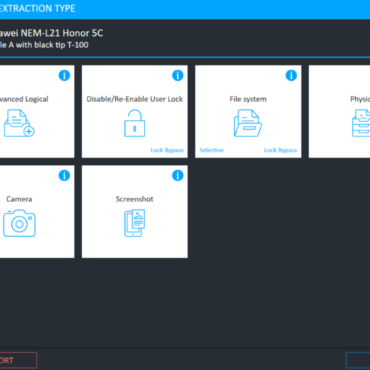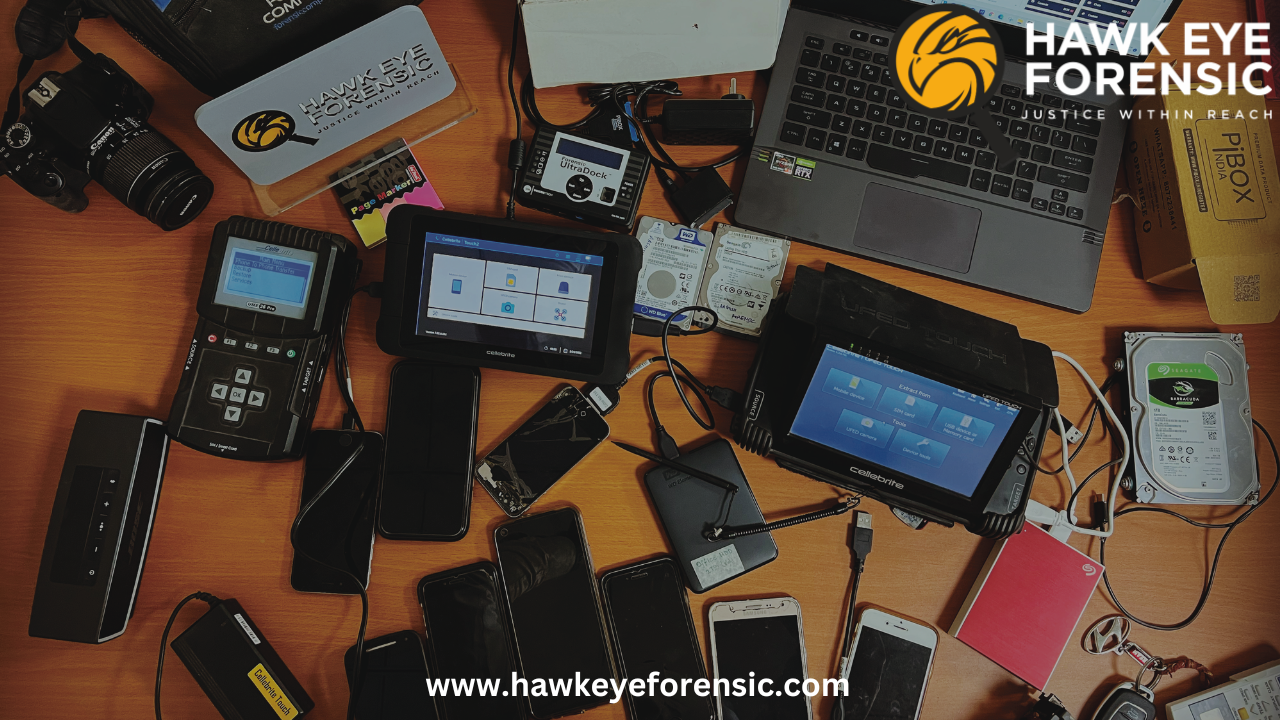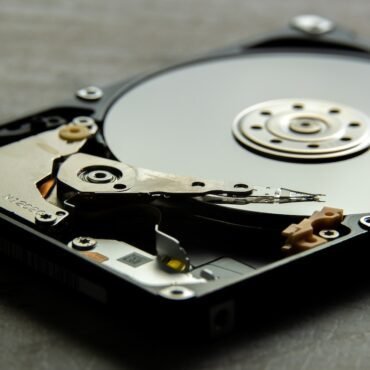Top 5 Mobile Forensic Challenges in 2025
Mobile devices have become central to modern life, storing vast amounts of personal, professional, and sometimes criminal data. For forensic investigators, smartphones are treasure troves of digital evidence. However, retrieving this data is far from straightforward. As mobile technology evolves, so do the challenges for forensic experts.
At Hawk Eye Forensic, based in Delhi, India, we specialize in overcoming these hurdles using advanced tools and methodologies. In this article, we explore the top five mobile forensic challenges in 2025 that investigators face while attempting to extract, analyze, and report digital evidence.
1. Device Heterogeneity
One of the most persistent and complex challenges in mobile forensics is device heterogeneity. Unlike PCs where a few operating systems dominate, the mobile market is incredibly fragmented.
Why It’s a Challenge:
-
There are thousands of smartphone models from various manufacturers like Apple, Samsung, Xiaomi, Oppo, etc.
-
Devices differ in hardware architecture, chipsets, file systems, and bootloaders.
-
Operating systems such as Android and iOS have multiple versions with varying security protocols.
-
Custom ROMs and vendor-specific features complicate uniform data extraction.
Impact on Forensics:
-
Forensic tools may not support certain device models.
-
Investigators must constantly update their tools and skills to stay compatible with the latest devices.
-
Some devices require unique approaches, including rooting, jailbreaking, or chip-off methods.
Real-World Example:
A forensic tool may successfully extract data from a Samsung Galaxy S20 but fail on a Galaxy A13 due to hardware or OS variations, even though both run Android.
2. Data Fragmentation
Another major hurdle in mobile forensics is data fragmentation, where digital data is scattered across multiple locations and formats within the same device.
Why It’s a Challenge:
-
Data resides in multiple storage locations: internal memory, SD cards, SIM cards, secure elements, etc.
-
Applications store data differently. For example, WhatsApp may save chat history in a local SQLite database, while Telegram stores data primarily on the cloud.
-
Cache files, logs, and temporary storage can contain evidence but are often overlooked.
-
Operating system and app updates can change where and how data is stored.
Impact on Forensics:
-
Investigators must know where to look and how to parse fragmented files.
-
Some data may appear deleted but still exist in hidden or residual files.
-
A single piece of evidence (e.g., a photo) might be referenced across several databases, requiring correlation.
Real-World Example:
Extracting call logs may involve analyzing the Android CallLogProvider, WhatsApp call history, and VOIP app caches—each using different file formats and timestamps.
3. Cloud and Synchronization
Today’s smartphones are not isolated devices; they are heavily integrated with cloud ecosystems. Services like Google Drive, iCloud, OneDrive, and cloud backup features in apps like WhatsApp and Facebook Messenger store large amounts of data off-device.
Why It’s a Challenge:
-
Critical data such as photos, messages, and documents may not be stored locally.
-
Cloud data requires legal authorization and additional credentials for access.
-
Remote wiping is a major threat — data synced with the cloud can be erased by the suspect before investigators can seize the device.
Impact on Forensics:
-
Investigators must extract credentials (e.g., tokens or passwords) to access cloud-stored content.
-
Many forensic tools require integration with APIs and cloud services to obtain evidence lawfully.
-
Synchronization can create duplicate artifacts, complicating the timeline.
Real-World Example:
A suspect deletes messages on their phone, but investigators recover them from their Google Drive backup using cloud extraction techniques. Without proper access, this evidence could be lost.
4. Encryption
Smartphones today are equipped with strong encryption protocols designed to protect user privacy — which also makes forensic acquisition more complex.
Why It’s a Challenge:
-
Devices use full-disk encryption, file-based encryption, and secure bootloaders.
-
Many apps like Signal, Telegram, and ProtonMail encrypt messages end-to-end.
-
Some phones use hardware-based security modules like Apple’s Secure Enclave or Samsung Knox.
Impact on Forensics:
-
Without the correct passcode or biometric, the device may be inaccessible.
-
Even if the device is unlocked, app-level encryption can still restrict access to specific data.
-
Advanced decryption methods may require proprietary tools or legal escalation.
Real-World Example:
An iPhone using iOS 17 with Secure Enclave will encrypt all user data. Investigators may only access limited artifacts through logical acquisition or cloud sync.
5. Privacy Concerns and Legal Boundaries
While technology poses technical barriers, legal and ethical constraints form another significant challenge. The need to respect individual privacy rights is more important than ever.
Why It’s a Challenge:
-
Data Protection Laws (such as GDPR, India’s DPDP Bill, etc.) restrict unauthorized data access.
-
Forensic investigators must maintain strict chain of custody and comply with warrants and legal protocols.
-
Mishandling personal data can lead to legal liability or cause evidence to be ruled inadmissible in court.
Impact on Forensics:
-
Investigators must balance evidence collection with legal compliance.
-
Every action must be documented, justified, and repeatable.
-
Sensitive data such as medical records, personal conversations, or private photos must be treated with care.
Real-World Example:
In a corporate investigation, collecting personal chats from an employee’s phone without proper consent can lead to lawsuits and invalidate the case.
Conclusion: The Road Ahead for Mobile Forensics
As mobile devices become more sophisticated, mobile forensic investigations must also evolve. Device heterogeneity, fragmented data, cloud integration, encryption, and legal restrictions are not just technical hurdles—they demand updated tools, expertise, and ethical frameworks.
At Hawk Eye Forensic, we stay ahead of these challenges by using industry-leading tools like Cellebrite, Oxygen Forensic Detective, and Magnet AXIOM, combined with legal compliance and best practices. Our mobile forensic experts in Delhi are trained to deal with the complexities of modern digital investigations — from smartphones to cloud environments.





Post comments (0)